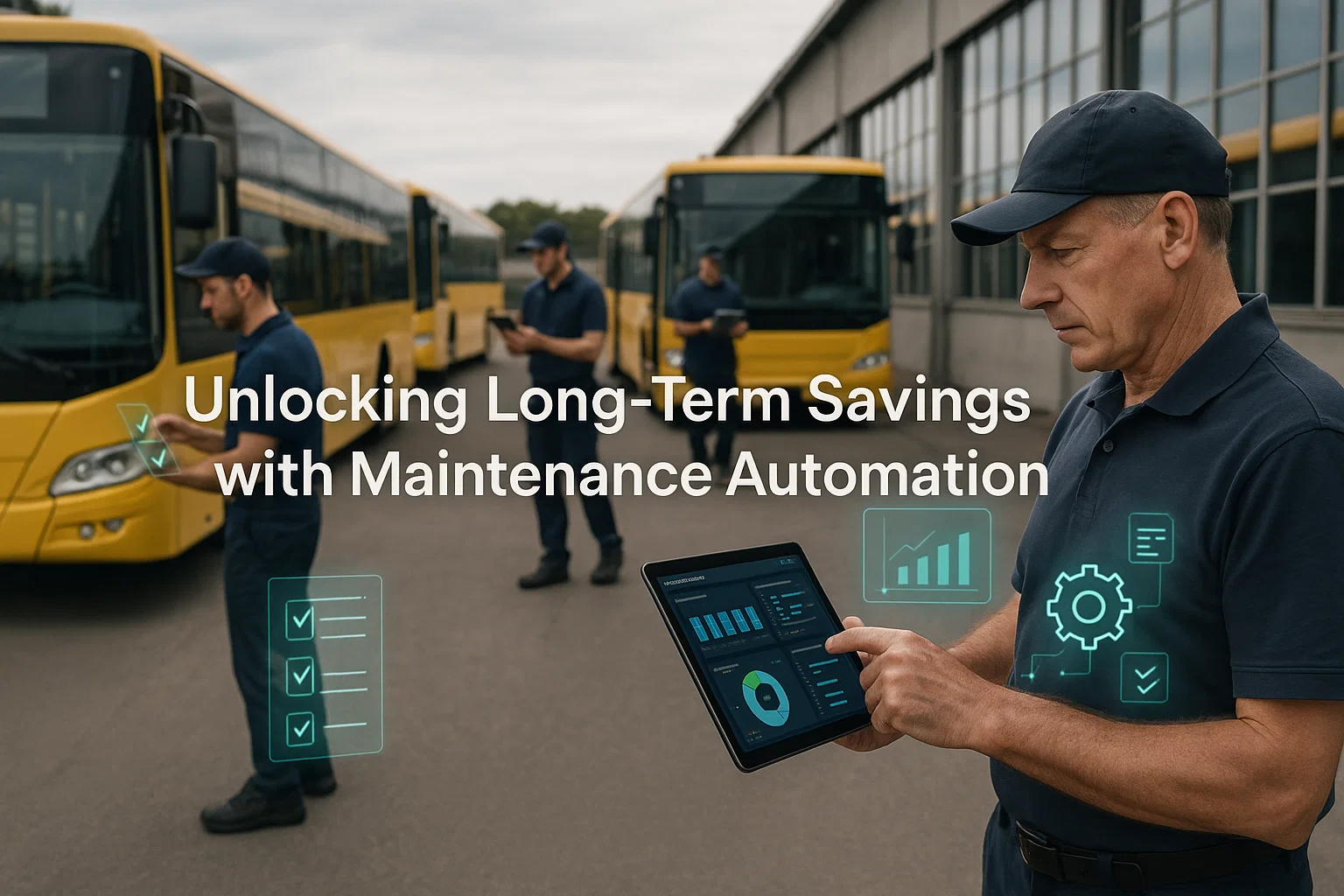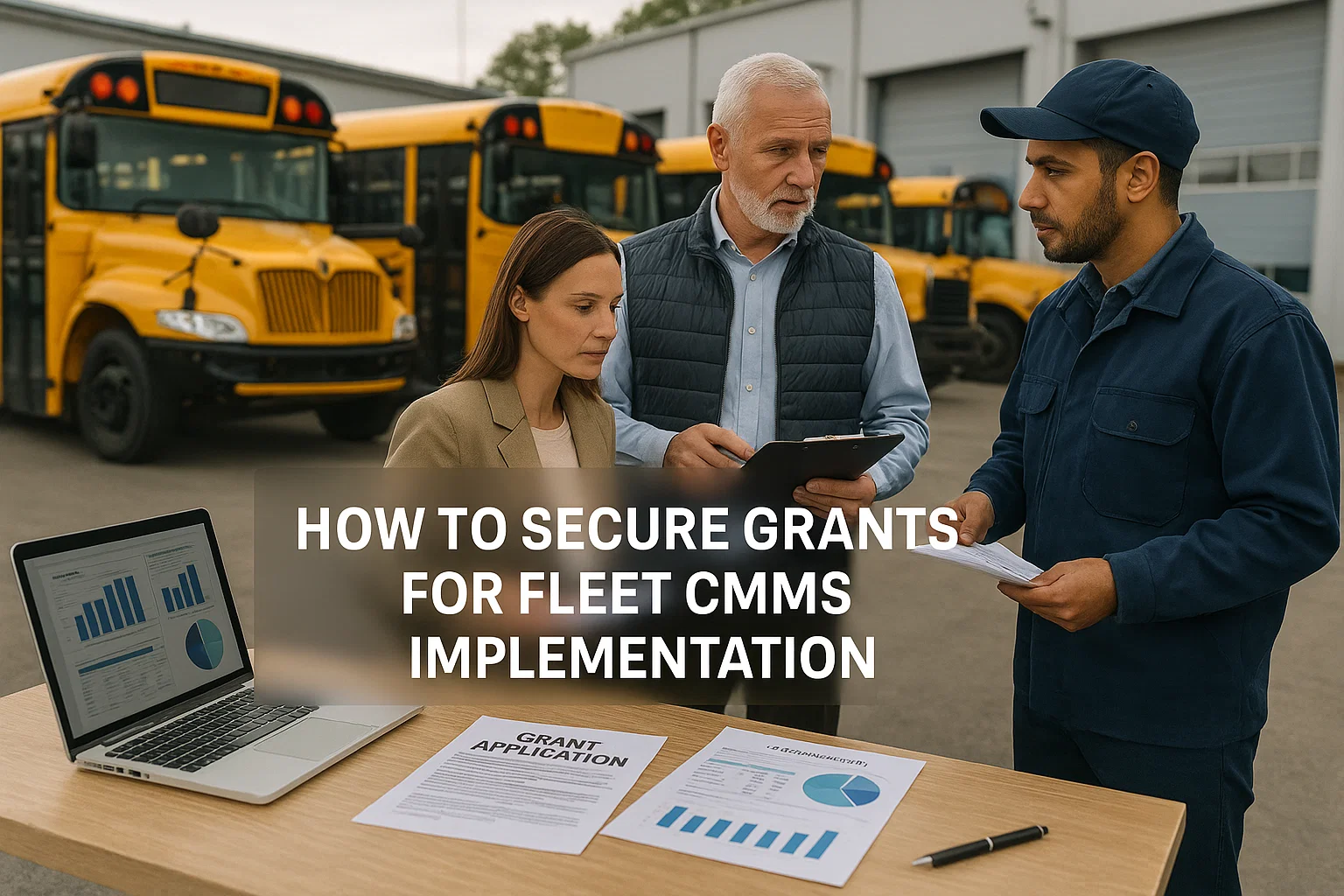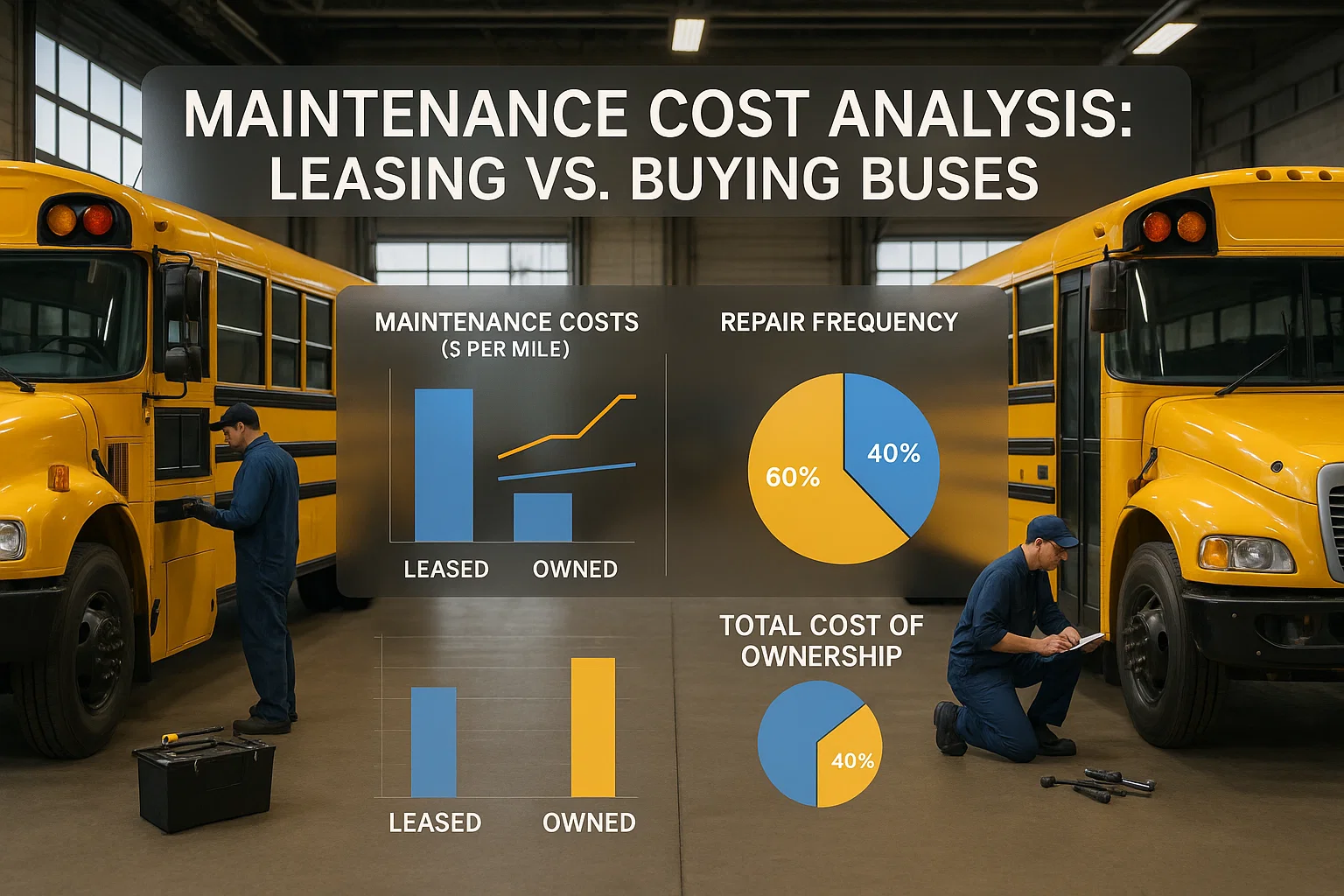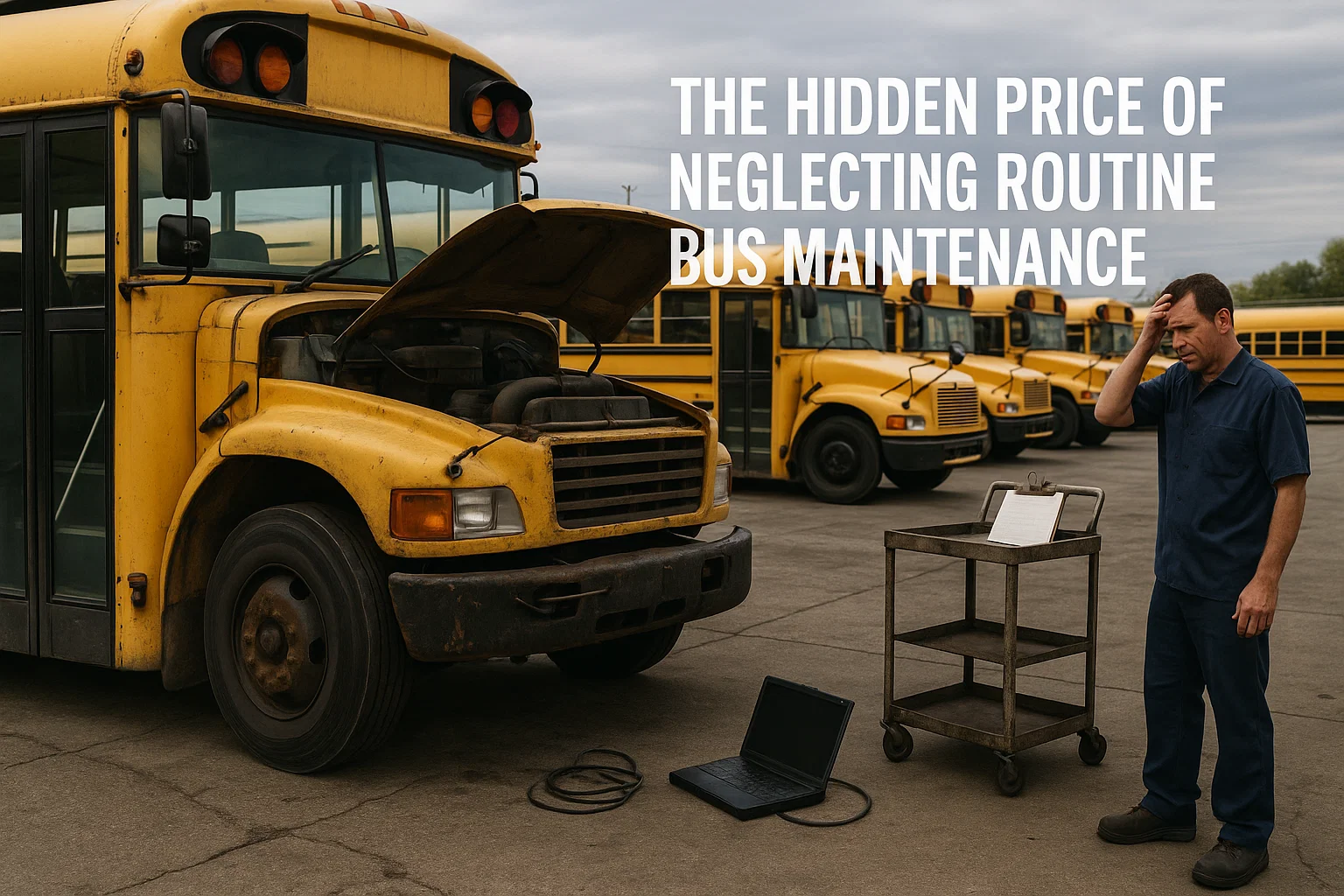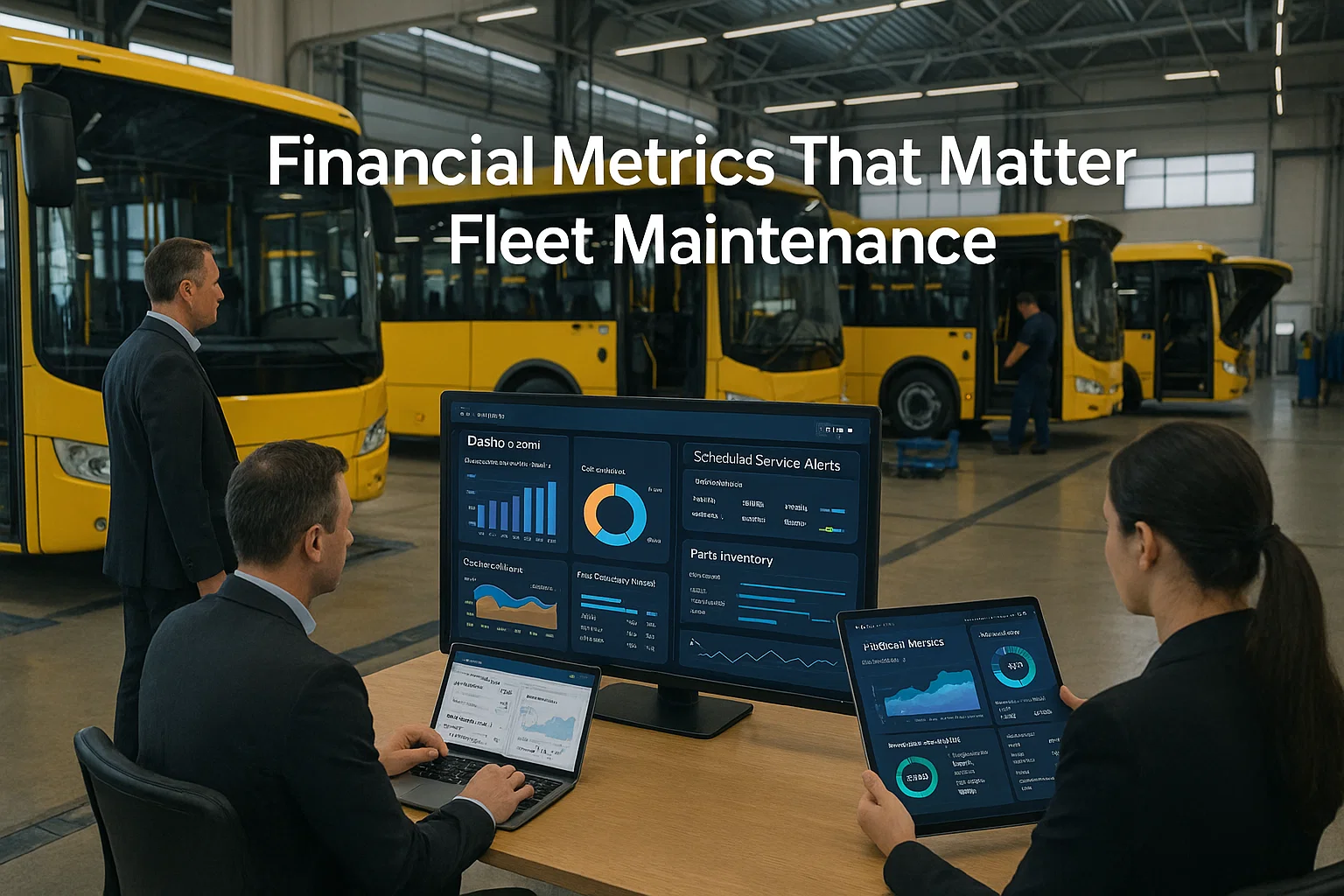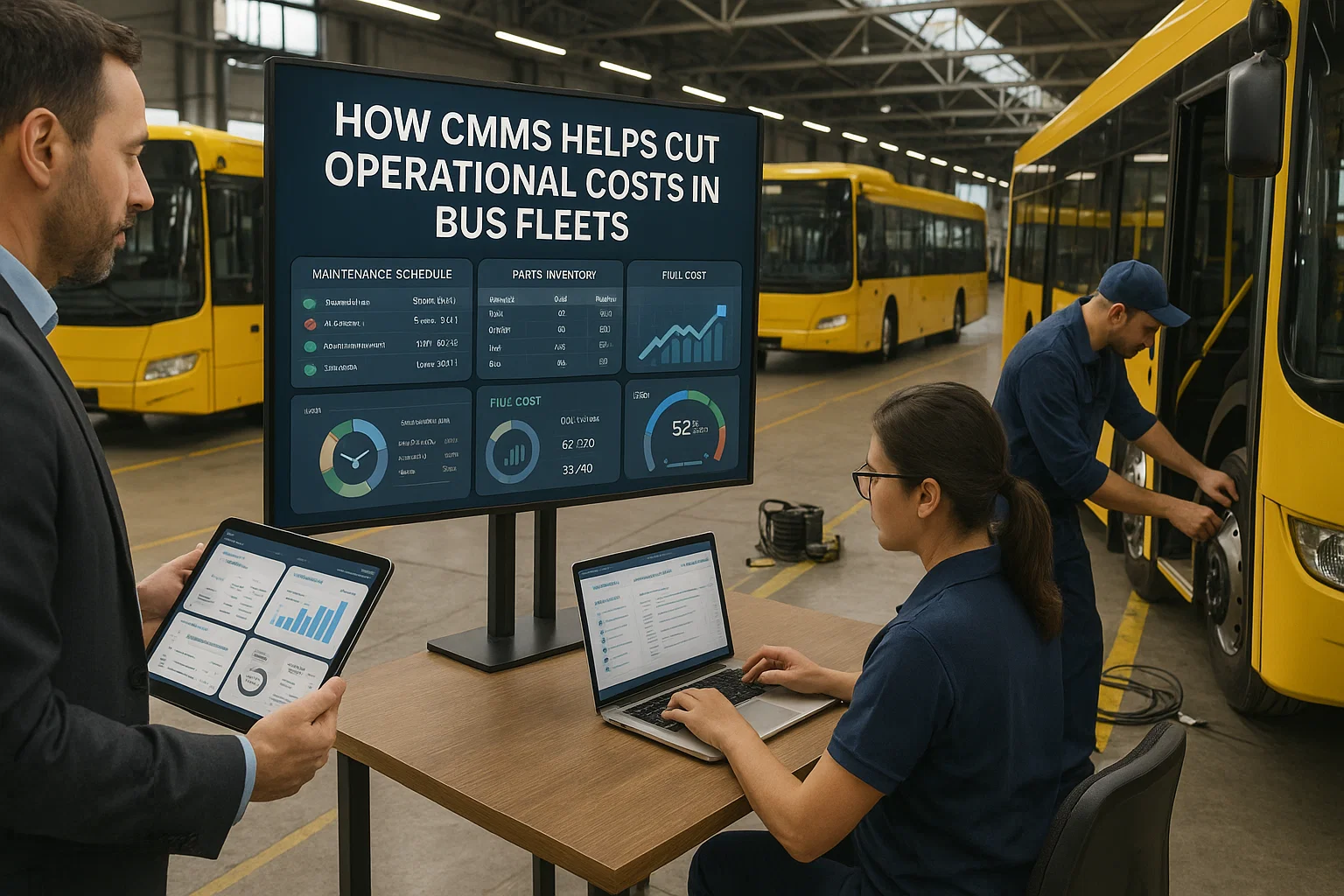Urban public transit systems form the backbone of American cities, moving millions of passengers daily while facing unprecedented operational challenges. City bus fleets require sophisticated maintenance strategies that balance service reliability, passenger safety, and budget constraints. Modern fleet management platforms designed specifically for urban transit operations transform these complex challenges into manageable, data-driven processes that maximize fleet performance while minimizing costs.
Modern city buses operate in demanding environments with frequent stops, heavy passenger loads, and continuous exposure to urban pollutants and weather extremes. These conditions accelerate component wear and require maintenance approaches that go beyond traditional scheduled service intervals. Transit agencies implementing advanced maintenance solutions report 35% reduction in maintenance costs, 45% improvement in on-time performance, and 50% decrease in unexpected breakdowns that disrupt service and strand passengers.
The evolution of urban transit technology introduces additional complexity with hybrid-electric powertrains, automated passenger counting systems, real-time tracking capabilities, and sophisticated emissions control requirements. Each technological advancement demands specialized maintenance expertise and coordinated management systems. Computerized maintenance systems integrate these diverse technologies into unified maintenance workflows that ensure every bus remains safe, reliable, and ready for service while meeting federal transit administration requirements and local environmental standards.
Optimize Your City Fleet Maintenance Today
Transform your urban transit operations with proven maintenance strategies designed for city buses.
Getting StartedBook a Demo
Predictive Maintenance Implementation
Predictive maintenance revolutionizes urban fleet management by identifying potential failures before they occur, preventing service disruptions that impact thousands of daily commuters. Digital maintenance platforms leverage advanced analytics and machine learning algorithms to analyze patterns in vehicle data, predicting component failures with remarkable accuracy.
Data-Driven Failure Prevention
Modern transit buses generate enormous amounts of operational data through onboard diagnostics, telematics systems, and sensor networks. This data reveals subtle patterns that indicate developing problems long before traditional inspection methods would detect them. Engine oil analysis tracks contamination levels and wear particles that predict bearing failures. Vibration monitoring identifies drivetrain issues before they cause breakdowns. Thermal imaging detects overheating components that could fail catastrophically.
Fleet management systems aggregate this data into actionable insights, automatically generating work orders when parameters exceed acceptable thresholds. Maintenance teams receive prioritized task lists based on failure probability and service impact, ensuring critical issues receive immediate attention while managing routine maintenance efficiently.
Component Lifecycle Optimization
- Engine Systems: Monitor compression, oil pressure, and exhaust temperatures to predict overhauls
- Transmission Health: Track fluid analysis and shift patterns to prevent costly rebuilds
- Brake Performance: Measure pad wear rates and air system pressure for safety compliance
- HVAC Efficiency: Analyze refrigerant levels and compressor performance for passenger comfort
- Electrical Systems: Monitor battery health and alternator output to prevent roadside failures
Route-Based Maintenance Scheduling
Urban bus routes vary dramatically in their impact on vehicle wear, from high-speed express services to stop-intensive local routes through congested downtown areas. Maintenance management software enables route-specific maintenance scheduling that accounts for these operational differences, optimizing service intervals based on actual usage patterns rather than generic mileage targets.
Route Characteristic Analysis
Express routes with highway operation experience different wear patterns than local routes with frequent stops. Highway operation stresses cooling systems and tires, while stop-and-go service accelerates brake wear and transmission degradation. Hills and grades add additional strain on powertrains and braking systems. Schedule a demo to see how modern systems track these variables to create customized maintenance schedules for each vehicle based on its assigned routes.
Environmental factors also influence maintenance requirements. Buses operating in coastal areas face accelerated corrosion from salt air. Desert routes stress cooling systems and air filtration. Winter operations with road salt and freeze-thaw cycles demand increased undercarriage maintenance. The platform adjusts service intervals automatically based on these environmental conditions.
Dynamic Schedule Optimization
High-Frequency Routes
Increased brake and suspension maintenance for buses with 200+ daily stops
Express Services
Enhanced cooling system and tire monitoring for sustained highway speeds
Peak Hour Operations
Accelerated service intervals for buses in congested rush-hour conditions
Inventory Management Integration
Effective parts inventory management directly impacts fleet availability and maintenance costs. Transit maintenance solutions integrate inventory tracking with maintenance scheduling, ensuring critical components remain available while minimizing carrying costs and obsolete stock.
Strategic Parts Procurement
Transit agencies typically maintain thousands of different parts across multiple bus models and generations. Without proper management, inventory costs spiral while critical components remain unavailable when needed. Advanced fleet systems analyze consumption patterns, lead times, and criticality levels to optimize stocking decisions.
The platform tracks parts usage across the entire fleet, identifying trends that inform procurement strategies. Seasonal variations in component failure rates guide inventory adjustments. Upcoming scheduled maintenance drives advance ordering. Emergency stock levels ensure critical repairs never wait for parts.
Vendor Management Excellence
- Automated Reordering: System-generated purchase orders based on minimum stock levels
- Supplier Performance Tracking: Monitor delivery times and part quality across vendors
- Warranty Management: Maximize coverage utilization before expiration
- Core Exchange Programs: Track rebuildable components for cost savings
- Bulk Purchase Optimization: Identify opportunities for volume discounts
Streamline Your Urban Fleet Operations
Discover how intelligent maintenance strategies can reduce costs and improve service reliability.
Getting StartedBook a Demo
Technician Productivity Enhancement
Skilled technician shortages challenge transit agencies nationwide, making workforce productivity crucial for maintaining service levels. Maintenance optimization platforms maximize technician efficiency through intelligent work assignment, mobile access to technical resources, and streamlined documentation processes.
Work Order Optimization
Traditional paper-based work orders waste valuable technician time on administrative tasks. Digital work orders through modern maintenance systems provide instant access to vehicle history, diagnostic codes, and repair procedures. Technicians receive prioritized task lists based on skill sets and certifications, ensuring complex repairs go to qualified personnel while apprentices handle routine maintenance.
Mobile interfaces allow technicians to update work progress in real-time, order parts directly from the repair bay, and access technical manuals without leaving the vehicle. Photo documentation capabilities capture repair evidence for warranty claims and training purposes. Voice-to-text features speed data entry for detailed repair notes.
Training and Development Integration
Skill Gap Analysis
Identify training needs based on upcoming technology deployments and repair trends
Certification Tracking
Monitor ASE certifications and manufacturer training requirements
Performance Metrics
Track efficiency and quality scores to guide development plans
Regulatory Compliance Management
Urban transit agencies navigate complex regulatory requirements from federal, state, and local authorities. Compliance management systems automate tracking and reporting, ensuring agencies meet all obligations while minimizing administrative burden.
Federal Transit Administration Requirements
FTA regulations mandate specific maintenance practices, inspection intervals, and documentation standards for federally funded transit systems. Digital compliance platforms automatically track compliance with State of Good Repair requirements, Transit Asset Management plans, and National Transit Database reporting obligations.
The platform maintains comprehensive audit trails for all maintenance activities, providing instant access to documentation during FTA triennial reviews. Automated alerts prevent missed inspections that could jeopardize federal funding. Performance metrics demonstrate continuous improvement for grant applications.
Environmental Compliance Excellence
- Emissions Testing: Schedule and document required emissions inspections
- Fluid Management: Track disposal of hazardous materials per EPA requirements
- Clean Air Act Compliance: Monitor fleet emissions for conformity determinations
- Stormwater Management: Document wash bay and maintenance facility compliance
- Alternative Fuel Reporting: Track clean fuel usage for environmental credits
Performance Analytics and Reporting
Data-driven decision making transforms fleet management from reactive to proactive operations. Fleet analytics platforms provide comprehensive analytics that reveal performance trends, identify improvement opportunities, and justify resource allocation decisions.
Key Performance Indicators
Transit agencies track numerous metrics to evaluate maintenance effectiveness. Mean Distance Between Failures (MDBF) measures reliability improvements. Maintenance cost per mile enables peer comparisons. Fleet availability percentages impact service planning. See a demonstration of how modern dashboards visualize these metrics in real-time, enabling rapid response to emerging issues.
Predictive analytics forecast future performance based on historical trends and current conditions. Budget projections account for upcoming major repairs and component replacements. Service planning incorporates maintenance requirements to prevent conflicts between operations and shop capacity.
Stakeholder Communication Tools
Board Reports
Executive dashboards demonstrating maintenance ROI and service improvements
Public Transparency
Performance metrics for community stakeholders and advocacy groups
Grant Documentation
Comprehensive data supporting funding applications and compliance reports
Elevate Your Transit Maintenance Strategy
Join leading transit agencies using advanced maintenance strategies to improve service and reduce costs.
Getting StartedBook a Demo
Emergency Response Optimization
When buses break down in service, rapid response minimizes passenger inconvenience and service disruption. Emergency response systems coordinate maintenance activities, dispatch road calls efficiently, and track response metrics for continuous improvement.
Road Call Management
Real-time vehicle tracking through integrated fleet platforms enables precise road call dispatch. Technicians receive exact locations, diagnostic trouble codes, and vehicle history before arriving on scene. Parts availability checks prevent wasted trips. Triage protocols prioritize responses based on passenger loads and service impact.
Mobile communication tools connect drivers, dispatchers, and technicians throughout the incident. Passenger transfer coordination minimizes delays. Towing decisions incorporate shop capacity and parts availability. Post-incident analysis identifies root causes to prevent recurrence.
Sustainable Maintenance Practices
Environmental sustainability increasingly drives transit agency decisions, from vehicle procurement to maintenance practices. Green fleet management supports sustainability initiatives through waste reduction, energy management, and lifecycle optimization strategies.
Resource Conservation Initiatives
- Fluid Recycling: Track collection and reprocessing of oils and coolants
- Parts Remanufacturing: Manage core returns and rebuilt component inventory
- Energy Monitoring: Analyze facility energy consumption for reduction opportunities
- Waste Stream Analysis: Identify recyclable materials and hazardous waste minimization
- Green Procurement: Prioritize environmentally friendly products and suppliers
Lifecycle assessments through data-driven maintenance support vehicle replacement decisions that balance environmental impact with operational costs. Extended vehicle life through optimized maintenance reduces manufacturing emissions. Predictive maintenance prevents catastrophic failures that generate excessive waste.
Technology Integration Strategies
Modern transit buses incorporate sophisticated technology systems requiring specialized maintenance approaches. Integrated maintenance platforms connect with these technologies to provide comprehensive fleet management capabilities.
Connected Vehicle Systems
Telematics integration provides real-time vehicle health monitoring, location tracking, and driver behavior analysis. Automated passenger counters feed ridership data for service planning. Fare collection systems require coordination between revenue and maintenance departments. Modern fleet solutions unify these data streams into actionable maintenance intelligence.
Electric and hybrid buses introduce unique maintenance requirements for battery systems, regenerative braking, and high-voltage components. The platform tracks battery degradation, schedules conditioning cycles, and ensures technician safety through lockout/tagout procedures. Charging infrastructure maintenance integrates with vehicle servicing for coordinated downtime.
Frequently Asked Questions
How does Bus CMMS improve fleet operations?
Advanced maintenance management transforms fleet operations through comprehensive digitization and automation of maintenance processes that traditionally rely on paper records and reactive repairs. The platform creates a centralized hub where all vehicle data, maintenance history, and operational metrics converge to provide unprecedented visibility into fleet health. Real-time monitoring capabilities alert managers to developing issues before they cause service disruptions, while predictive analytics forecast component failures weeks in advance. System integration with telematics enables automatic work order generation based on diagnostic trouble codes, eliminating delays between problem detection and repair initiation. Mobile interfaces empower technicians with instant access to repair procedures, parts availability, and vehicle history, reducing diagnostic time by 40% and improving first-time fix rates by 35%. Automated compliance tracking ensures agencies never miss critical inspections that could result in fines or service suspensions. The platform's reporting capabilities transform raw data into actionable insights that drive continuous improvement in reliability, efficiency, and cost management. By implementing comprehensive maintenance solutions, transit agencies typically achieve 30-45% reduction in maintenance costs, 50% decrease in unplanned downtime, and 25% improvement in fleet availability within the first year of deployment.
What ROI can fleet operators expect from Bus CMMS?
Fleet operators implementing digital maintenance systems typically realize return on investment within 6-12 months through multiple cost reduction and revenue enhancement opportunities. Direct maintenance cost savings average 35-40% through optimized parts inventory management, reduced emergency repairs, and extended component life from predictive maintenance strategies. Labor productivity improvements of 25-30% result from streamlined workflows, mobile technology adoption, and intelligent work assignment based on technician skills and certifications. Automated maintenance management reduces administrative overhead by 50-60%, freeing staff to focus on value-added activities rather than paperwork and manual data entry. Fuel consumption decreases by 10-15% through route optimization and timely maintenance of engine and drivetrain components. Vehicle lifecycle extensions of 2-3 years defer capital expenditures while maintaining service quality and safety standards. Improved compliance management prevents regulatory fines that can reach hundreds of thousands of dollars for serious violations. Enhanced data quality and reporting capabilities strengthen grant applications, often resulting in increased federal and state funding. When calculating total cost of ownership, modern fleet management implementation delivers net savings of $15,000-25,000 per bus annually, making it one of the highest-return investments available to transit agencies seeking operational excellence.
Conclusion
Optimizing maintenance for city bus fleets requires sophisticated strategies that address the unique challenges of urban transit operations. Through comprehensive maintenance management implementation, transit agencies transform overwhelming complexity into manageable, data-driven processes that enhance service reliability while controlling costs.
The strategies outlined—predictive maintenance, route-based scheduling, inventory optimization, technician productivity enhancement, and regulatory compliance management—work synergistically to create maintenance excellence. Transit agencies report remarkable improvements including 35% cost reduction, 45% better on-time performance, and 50% fewer service disruptions, directly benefiting the millions of passengers who depend on public transportation daily.
As urban areas continue growing and environmental concerns intensify, efficient public transit becomes increasingly critical to sustainable city development. Fleet optimization platforms provide the technological foundation for transit agencies to meet these challenges, ensuring buses remain safe, reliable, and efficient while maximizing return on public investment. The future of urban mobility depends on maintenance strategies that leverage technology, data, and skilled professionals to deliver exceptional public transit services.
Ready to Transform Your City Bus Fleet Performance?
Take the first step toward optimized maintenance and improved urban transit operations.


